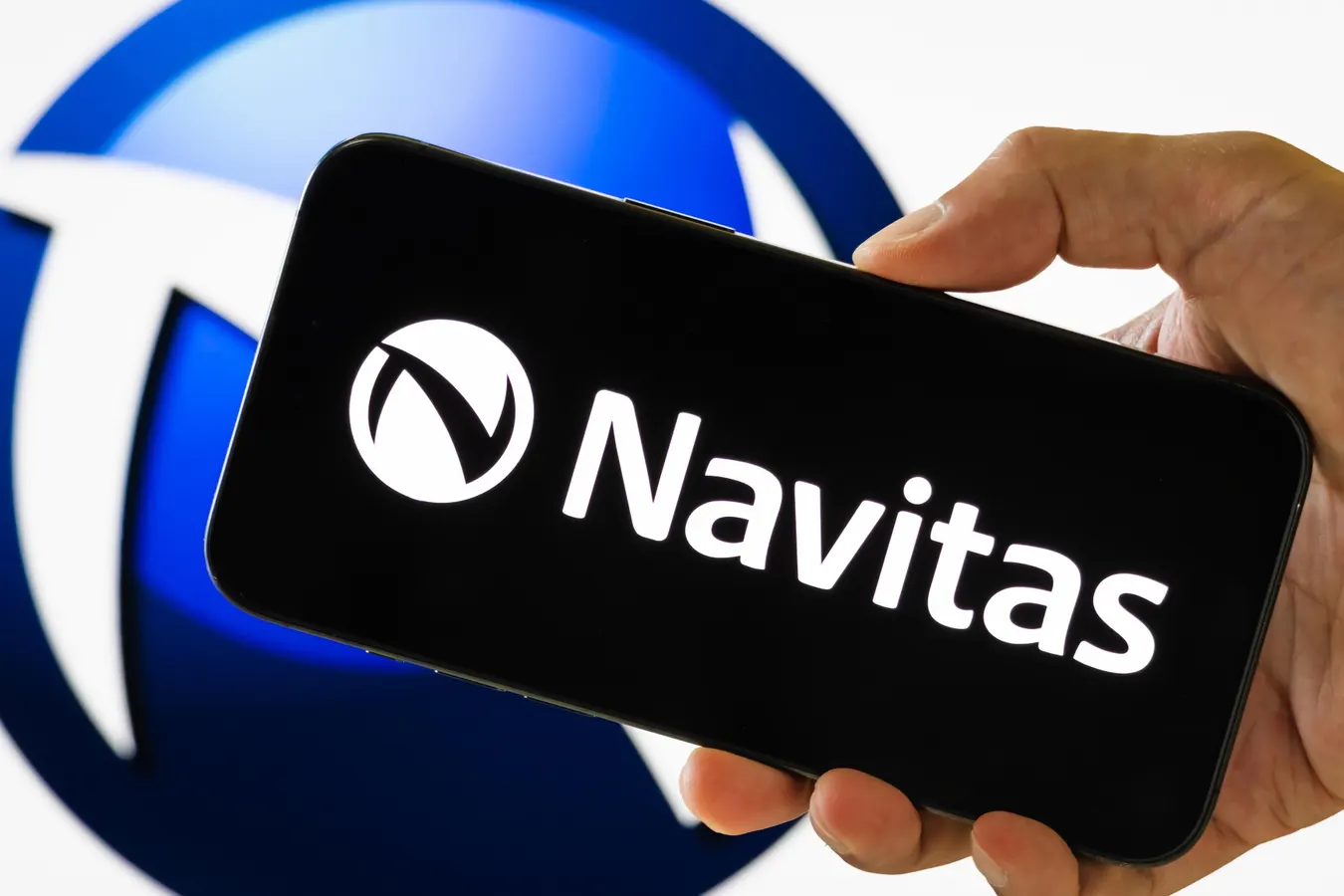By Cheng Xin,Contributor,Trefis Team
Copyright forbes

CHONGQING, CHINA – JULY 30: In this photo illustration, a person holds a smartphone displaying the logo of Navitas Semiconductor Corporation (NASDAQ: NVTS), an American company specializing in gallium nitride (GaN) power ICs and energy-efficient semiconductor technologies, with the company’s logo visible in the background, on July 30, 2025 in Chongqing, China. (Photo illustration by Cheng Xin/Getty Images)
Getty Images
Navitas Semiconductor Corp. (NASDAQ: NVTS) has emerged as one of the most significant rebound stories of 2025 in the semiconductor industry. The stock has more than doubled year-to-date, rising from approximately $5 at the beginning of the year to nearly $10 in mid-October. This surge has been driven by a combination of innovation, strong partnerships, and investor excitement surrounding next-generation power semiconductors that have the potential to transform energy delivery in an AI-driven landscape.
However, if you are looking for an upside with reduced volatility compared to holding a single stock, consider the High Quality Portfolio. It has consistently outpaced its benchmark—a blend of the S&P 500, Russell, and S&P MidCap indexes—and has delivered returns surpassing 105% since its launch. Overall, HQ Portfolio stocks have offered superior returns with lower risk compared to the benchmark index; they exhibit less volatility, as illustrated in HQ Portfolio performance metrics. Additionally, see Can PayPal Stock Fall To $50?
Why the surge?
The pivotal moment for Navitas came with its prominent partnership with Nvidia earlier this year. The company declared that its gallium nitride (GaN) and silicon carbide (SiC) power chips would be integrated into Nvidia’s new 800-volt high-voltage direct current (HVDC) data center architecture — a technology aimed at enhancing energy efficiency for AI infrastructure. The announcement sent ripples through the market, instantly associating Navitas with the AI infrastructure surge that has already propelled significant gains for Nvidia and its partners. Investors began to view Navitas not merely as a niche chip manufacturer, but as a potential facilitator of next-generation data center efficiency.
Nevertheless, genuine tailwinds are driving the enthusiasm. GaN and SiC chips are increasingly seen as the future of power management. They are faster, more efficient, and more compact compared to traditional silicon components — attributes that are critical as data centers require increasing amounts of power to accommodate AI workloads. Navitas’s expansion of its 200 mm GaN manufacturing and partnerships with foundries such as PSMC indicate its readiness for scaling. If successful, the company may establish itself as a key supplier for high-efficiency power solutions across electric vehicles, renewables, and cloud infrastructure.
However, risks exist. Navitas has not yet become profitable, and there are many who believe that the valuation has significantly outpaced its earnings potential. Some assessments place fair value well below current trading levels, suggesting the stock is influenced more by narrative than by metrics. Furthermore, larger semiconductor firms — such as Infineon, Texas Instruments, and STMicroelectronics — are also advancing in GaN and SiC technologies, meaning that Navitas will encounter stiff competition in gaining market share.
MORE FOR YOU
What’s Next?
Looking forward, the subsequent phase for Navitas will hinge on execution. Investors will be attentively monitoring the upcoming quarterly results for indications of genuine revenue growth stemming from its collaboration with Nvidia and overall demand in data centers. Guidance on margins, bookings, and manufacturing progress could decide whether the stock maintains its gains or retracts. Positive design wins or long-term supply agreements with hyperscale providers may further affirm its standing, while any setbacks in scaling production could quickly dampen sentiment.
In essence, the rally of Navitas epitomizes both potential and speculation. The company stands at the intersection of two significant technology trends — power efficiency and AI infrastructure — yet it still needs to demonstrate its ability to turn these opportunities into consistent profitability. For the time being, NVTS remains a high-volatility, high-reward bet on the electrification of the digital realm. Whether the stock’s next move is upward or downward will depend on whether the narrative evolves into substantial, replicable financial outcomes.
Now, we apply a risk assessment framework while constructing the Trefis High Quality (HQ) Portfolio, which, with a collection of 30 stocks, has a track record of comfortably outperforming the S&P 500 over the last 4-year period —and has achieved returns exceeding 105% since its inception. . Why is that? As a group, HQ Portfolio stocks provided better returns with less risk versus the benchmark index; less of a roller-coaster ride as evident in HQ Portfolio performance metrics.
Editorial StandardsReprints & Permissions